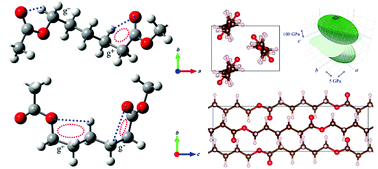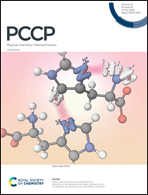Conformational characteristics and conformation-dependent properties of poly(ε-caprolactone)†
Abstract
Structures and properties of isolated and crystalline poly(ε-caprolactone) (PCL) chains have been investigated. Ab initio molecular orbital (MO) calculations were conducted for methyl 6-acetoxyhexanoate (MAH), a model compound of PCL, to yield Gibbs free energies of all its existent conformers. Bond conformations of its seven bonds corresponding to the repeating unit of PCL were calculated therefrom; two C–C bonds close to the ester group show gauche preferences owing to intramolecular C–H⋯O attractions, and the other five prefer trans forms. 1H and 13C NMR vicinal coupling constants of 13C-labeled MAH yielded bond conformations consistent with the MO calculations. The rotational isomeric state (RIS) calculations on PCL led to the characteristic ratios (4.1–4.5) that agree with those estimated experimentally from the Stockmayer–Fixman plots. Periodic density functional theory calculations on PCL crystals yielded the optimum structures and Young's moduli in the a-, b-, and c (fiber)-axis directions. The fiber-axis modulus (252 GPa) falls short of that (333 GPa) of polyethylene but exceeds that (182 GPa) of poly(ethylene terephthalate), whereas the three-dimensionally averaged Young's modulus (10.7 GPa) of PCL is the smallest of those of representative polymers investigated so far. The enzymatic selectivity of biodegradable polyesters is discussed herein in terms of their conformational characteristics and surface structures of enzymes.



 Please wait while we load your content...
Please wait while we load your content...